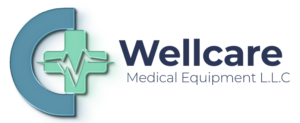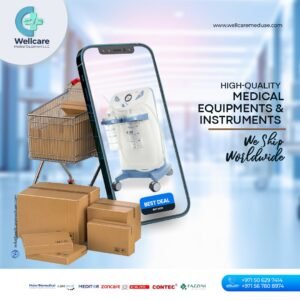Ambulance-Emergency Rescue Equipments supplier in Mali
Wellcare Medical Equipment LLC is a reputable supplier specializing in providing top-quality ambulance and emergency rescue equipment. As a company with a strong presence in the Middle East, Wellcare has expanded its reach to international markets, including Mali, where there is a growing demand for advanced medical and emergency response solutions. In Mali, where healthcare infrastructure faces significant challenges, the availability of reliable and efficient emergency rescue equipment is crucial for saving lives and improving the overall healthcare system. Wellcare Medical Equipment LLC addresses this need by offering a comprehensive range of products designed to meet the specific requirements of emergency medical services (EMS) in the region. The company supplies a wide array of ambulance equipment, including stretchers, defibrillators, oxygen delivery systems, patient monitors, and other essential tools needed for emergency care. These products are sourced from leading manufacturers known for their innovation and quality, ensuring that healthcare providers in Mali have access to the latest technology and reliable equipment. Moreover, Wellcare Medical Equipment LLC not only provides the equipment but also offers training and support to ensure that the local healthcare professionals in Mali can effectively use these tools in critical situations. This holistic approach enhances the capacity of emergency medical services in the country, contributing to better patient outcomes and a more robust healthcare system overall. By focusing on quality, reliability, and comprehensive support, Wellcare Medical Equipment LLC has positioned itself as a trusted partner for healthcare providers in Mali, playing a vital role in improving emergency medical care in the region.
The deployment of advanced ambulance-emergency rescue equipment in Mali brings significant advantages that are essential for enhancing the country’s healthcare system and improving patient outcomes, particularly in emergencies.
Rapid Response and Life-Saving Interventions: Equipped ambulances enable swift medical intervention, reducing the time between an emergency and the delivery of critical care. This rapid response is crucial in life-threatening situations, such as cardiac arrests, severe injuries, or respiratory failures, where every second counts.
Enhanced Patient Care in Transit: Modern ambulance equipment, such as defibrillators, ventilators, and advanced monitoring systems, allows medical personnel to stabilize patients while en route to healthcare facilities. This ensures continuous care, improving the chances of survival and reducing the severity of conditions upon arrival at the hospital.
Improved Access to Remote and Rural Areas: Mali’s diverse geography includes remote and rural areas where healthcare facilities may be scarce. Well-equipped ambulances make it possible to reach these areas, providing critical care and transport to individuals who might otherwise have limited access to emergency medical services.
Increased Efficiency in Emergency Medical Services (EMS): The integration of high-quality rescue equipment into Mali’s EMS system enhances the overall efficiency of emergency response teams. This includes better coordination, quicker patient assessments, and more effective use of resources, all contributing to a more streamlined and effective emergency response system.
Strengthening Public Health Infrastructure: By equipping ambulances with advanced medical technology, Mali strengthens its public health infrastructure. This investment not only addresses immediate healthcare needs but also builds long-term capacity for handling emergencies, pandemics, and other public health crises.
Boosting Healthcare Worker Confidence and Performance: Access to reliable and sophisticated equipment empowers healthcare workers to perform their duties with greater confidence and effectiveness. Knowing they have the right tools at their disposal enhances their ability to provide high-quality care, even under pressure.
Supporting Disaster Response and Preparedness: Mali faces challenges related to natural disasters and other emergencies. Ambulance-emergency rescue equipment plays a crucial role in disaster response, ensuring that medical teams can quickly mobilize and provide care to those affected, thereby reducing the impact of such events on the population.
Contributing to Public Safety and Well-being: The presence of well-equipped ambulances in the community contributes to overall public safety, providing reassurance that medical help is readily available in case of emergencies. This sense of security can have positive effects on the community’s well-being and trust in the healthcare system.
By integrating advanced ambulance-emergency rescue equipment into its healthcare system, Mali can significantly improve its capacity to handle emergencies, ultimately leading to better health outcomes and a more resilient healthcare infrastructure.




